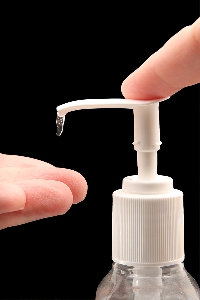How long is a cold contagious
By Catalogs Editorial Staff

Simple tips to prevent getting or sharing colds, germs and viruses
It?s that time of year again; early February, the icy heart of winter. Typically, at this time of year, there is a spike in the occurrence of flus, viruses and winter colds. We are all familiar with those early warnings signaling the onset of a winter cold ? runny nose, congestion, a dry, sore or scratchy throat, sneezing, coughing, and that tired, run-down achy feeling in the muscles.
While millions of people have suffered through winter colds, many still remain unaware of the answer to the nagging question ? how long is a cold contagious? While it is impossible to precisely pinpoint the exact definition or time line of how long is a cold contagious, there is a safe estimate that people suffering from colds should abide by.
The common cold is considered to be contagious between 24 hours before the onset of symptoms until 5 days after onset. Of course, this estimate can vary slightly depending on the type of germs or viruses.
The typical winter cold is actually a type of virus that is easily most easily spread through human contact in public places. Cold viruses grow principally in the nasal passages and are present in the highest quantities in the nasal fluid of infected people. In fact, medical studies have proven that the highest concentration of the cold virus in nasal secretions occurs during the first three days of an infection.
~
If you are concerned about contracting a winter cold, or contaminating other people while you are sick, here are five simple steps to avoid either getting or sharing those nasty germs.
1) Especially at this time of year, when the cold weather can lower people?s resistance to germs, avoid sharing cups, drinks, food, utensils, toothbrushes, or other personal items. If you are in a public place, a school, a bus station, a shopping mall? remember to wash your hands frequently with antibacterial soap.
2) Cover your mouth when you cough, and cover your nose when you sneeze! These two simple tips can make a significant difference in the amount of nasal fluid that travels through the air. In fact, many medical professionals advise coughing or sneezing into the inner crook of your elbow, rather than directly into your hand. This simple technique reduces the amount of germs on hands and fingers.
3) If you feel you may be getting a cold, stay home! If your employer requires a doctor?s note, call your doctor and explain the situation. In the work place, germs are most easily transferred on computer keyboards, telephone receivers, public office equipment and public bathrooms. If you are concerned about colds or viruses in the workplace, make a point of regularly cleaning and sanitizing public spaces and office equipment.
4) If you have a cold, and are wondering, how long is a cold contagious? Go with the safest five day estimate. If you can?t avoid going into work, or being in public spaces, try wearing a simple paper face mask, to avoid expelling nasal fluid or saliva when you cough or sneeze. Explain to your friends or co-workers your concern about infecting others. Avoid actions that involve direct contact with others, such as shaking hand or giving hugs.
5) Have confidence in hand sanitizers! Carry a small size bottle of hand sanitizer with you, keep one in your desk at work, and even take the liberty of placing one near public spaces in your place of business. The alcohol contained in hand sanitizing products can dramatically reduce the percentage of germs and viruses transmitted by hands and fingers.
While there is no cure for the common cold, rest assured that it won?t last long. If it seems that your cold has lasted longer than the average 3-7 day maximum expectancy, leading you to question how long is a cold contagious? Then it may be a sign that your cold has led to a more serious infection.
Because colds tend to lower our immunity, they can occasionally lead to sinus infections, strep throat, ear infections, pneumonia, or various other illnesses. In this case, a visit to the doctor and a prescription for antibiotics may be in order.
Popular Savings Offers











